
How to Use Arduino GIGA R1: Examples, Pinouts, and Specs
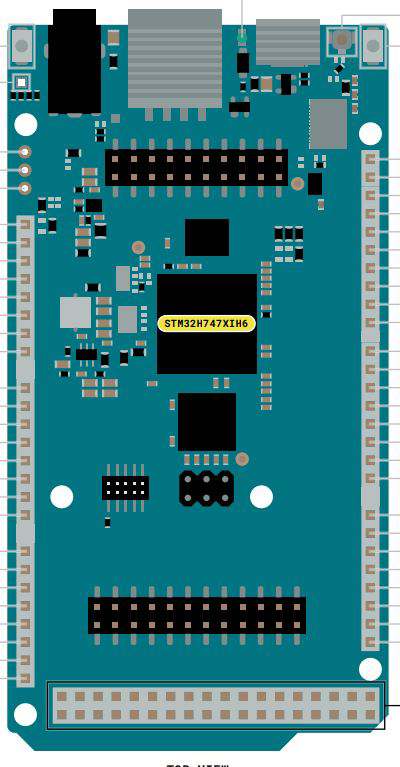
 Design with Arduino GIGA R1 in Cirkit Designer
Design with Arduino GIGA R1 in Cirkit DesignerIntroduction
The Arduino GIGA R1 WiFi is a high-performance microcontroller board designed for advanced projects and applications. Powered by a 32-bit ARM Cortex-M7 processor, it offers exceptional computational power, making it ideal for demanding tasks such as robotics, IoT, machine learning, and multimedia processing. The board also features a secondary ARM Cortex-M4 core, enabling real-time operations and multitasking.
With its extensive I/O capabilities, built-in WiFi and Bluetooth connectivity, and compatibility with a wide range of sensors and modules, the GIGA R1 WiFi is a versatile platform for both hobbyists and professionals.
Explore Projects Built with Arduino GIGA R1
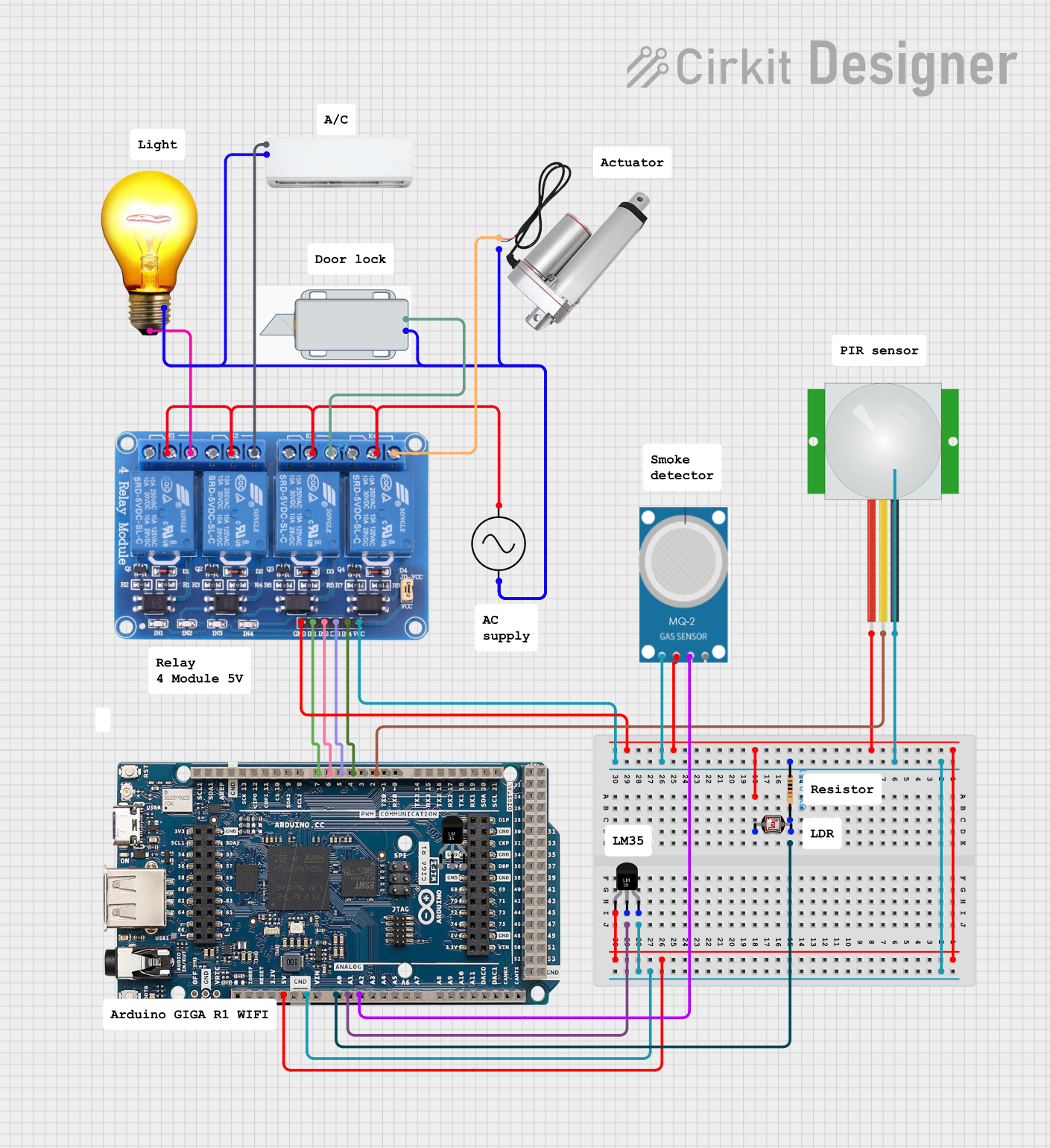
 Open Project in Cirkit Designer
Open Project in Cirkit Designer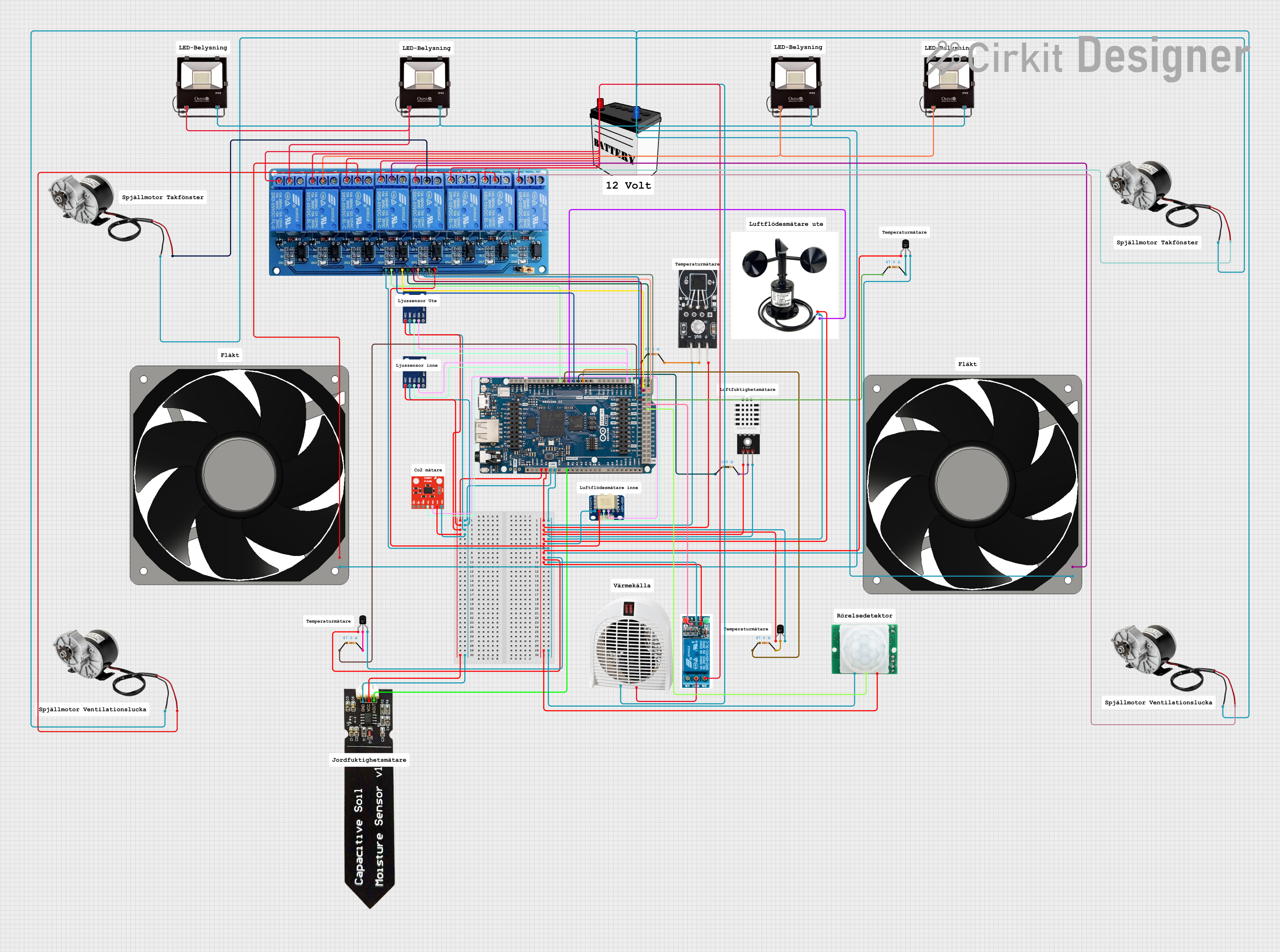
 Open Project in Cirkit Designer
Open Project in Cirkit Designer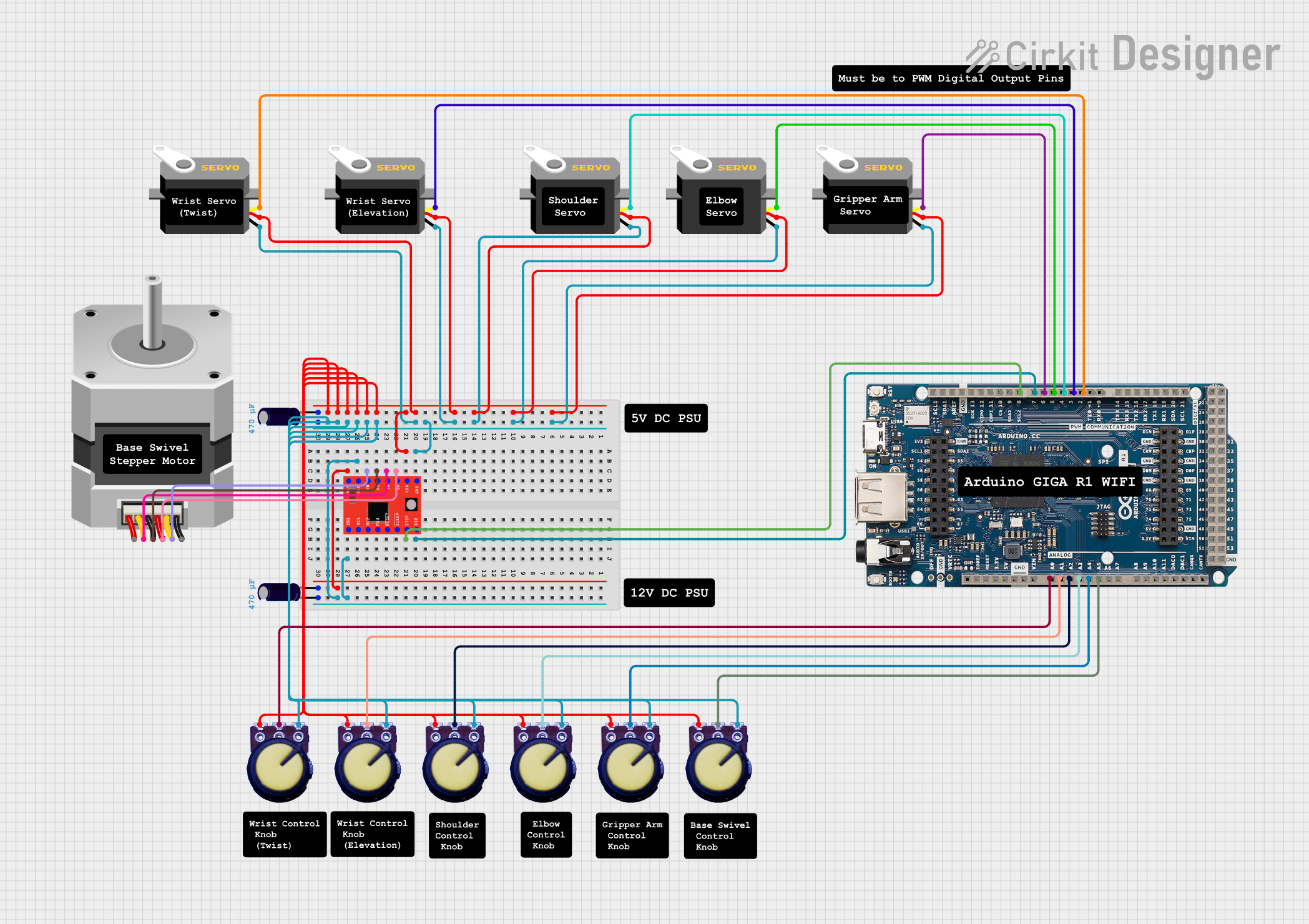
 Open Project in Cirkit Designer
Open Project in Cirkit Designer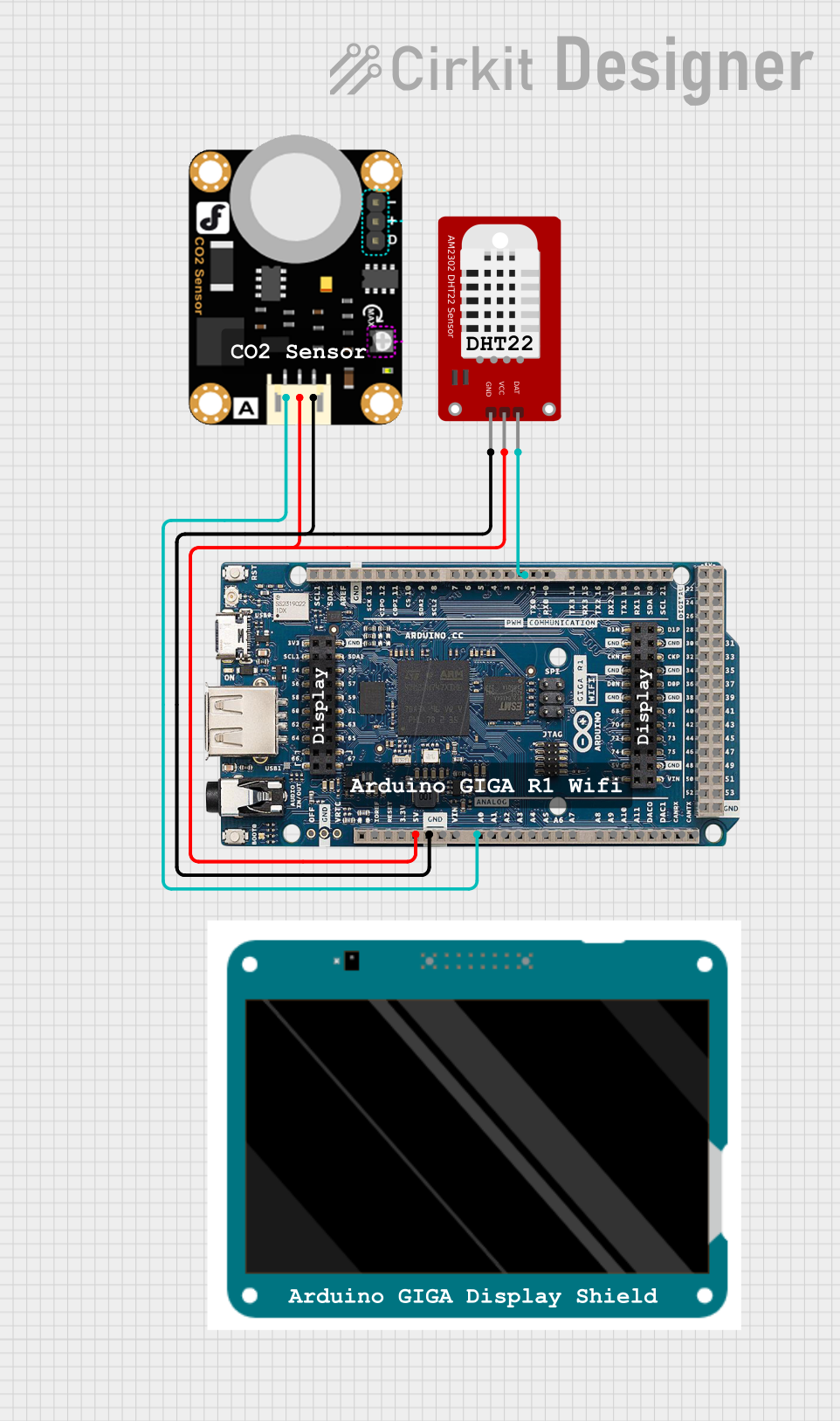
 Open Project in Cirkit Designer
Open Project in Cirkit DesignerExplore Projects Built with Arduino GIGA R1

 Open Project in Cirkit Designer
Open Project in Cirkit Designer
 Open Project in Cirkit Designer
Open Project in Cirkit Designer
 Open Project in Cirkit Designer
Open Project in Cirkit Designer
 Open Project in Cirkit Designer
Open Project in Cirkit DesignerCommon Applications
- Robotics and automation systems
- IoT (Internet of Things) devices and smart home applications
- Machine learning and AI-based projects
- Multimedia processing (e.g., audio and video applications)
- Data acquisition and real-time monitoring systems
Technical Specifications
Key Technical Details
| Specification | Value |
|---|---|
| Microcontroller | STM32H747XI (ARM Cortex-M7 @ 480 MHz + ARM Cortex-M4 @ 240 MHz) |
| Operating Voltage | 3.3V |
| Input Voltage (VIN) | 7-12V |
| Digital I/O Pins | 76 (12 PWM outputs) |
| Analog Input Pins | 12 (ADC resolution: 12-bit) |
| Analog Output Pins | 2 (DAC resolution: 12-bit) |
| Flash Memory | 8 MB |
| SRAM | 1 MB |
| EEPROM | None (emulated in Flash) |
| Communication Interfaces | UART, I2C, SPI, CAN, USB-C (Host/Device) |
| Connectivity | WiFi (802.11 b/g/n), Bluetooth 5.1 |
| Dimensions | 102 x 25 mm |
| Weight | 25 g |
Pin Configuration and Descriptions
The Arduino GIGA R1 WiFi features a rich set of pins for various functionalities. Below is a summary of the pin configuration:
Power Pins
| Pin Name | Description |
|---|---|
| VIN | Input voltage to the board (7-12V) |
| 3.3V | Regulated 3.3V output |
| 5V | Regulated 5V output |
| GND | Ground |
Digital I/O Pins
| Pin Range | Description |
|---|---|
| D0-D53 | General-purpose digital I/O pins |
| PWM Pins | D2-D13, D44-D53 (PWM capable) |
Analog Pins
| Pin Name | Description |
|---|---|
| A0-A11 | Analog input pins (12-bit ADC) |
| DAC0, DAC1 | Analog output pins (12-bit DAC) |
Communication Pins
| Pin Name | Description |
|---|---|
| TX/RX | UART communication |
| SDA/SCL | I2C communication |
| MOSI/MISO/SCK | SPI communication |
| CANRX/CANTX | CAN bus communication |
Special Pins
| Pin Name | Description |
|---|---|
| RESET | Resets the microcontroller |
| USB-C | USB Host/Device interface |
| BOOT0 | Bootloader mode selection |
Usage Instructions
How to Use the Arduino GIGA R1 WiFi in a Circuit
Powering the Board:
- Use the USB-C port for powering and programming the board.
- Alternatively, supply 7-12V to the VIN pin for standalone operation.
Connecting Peripherals:
- Use the digital and analog pins to connect sensors, actuators, and other peripherals.
- For communication, utilize the UART, I2C, SPI, or CAN interfaces as needed.
Programming the Board:
- Install the Arduino IDE and add the GIGA R1 WiFi board via the Boards Manager.
- Select the correct board and port in the IDE, then upload your sketch.
Using WiFi and Bluetooth:
- The board includes built-in WiFi and Bluetooth capabilities. Use the
WiFiandBluetoothSeriallibraries to enable wireless communication.
- The board includes built-in WiFi and Bluetooth capabilities. Use the
Important Considerations and Best Practices
- Voltage Levels: The board operates at 3.3V logic levels. Ensure connected devices are compatible or use level shifters.
- Power Supply: Avoid exceeding the recommended input voltage range (7-12V) to prevent damage.
- Multitasking: Leverage the dual-core architecture for real-time and computationally intensive tasks.
- Heat Management: For prolonged high-performance operations, consider adding a heatsink to the microcontroller.
Example Code: Blinking an LED
The following example demonstrates how to blink an LED connected to pin D13:
// Define the LED pin
const int ledPin = 13;
void setup() {
// Set the LED pin as an output
pinMode(ledPin, OUTPUT);
}
void loop() {
// Turn the LED on
digitalWrite(ledPin, HIGH);
delay(1000); // Wait for 1 second
// Turn the LED off
digitalWrite(ledPin, LOW);
delay(1000); // Wait for 1 second
}
Example Code: Connecting to WiFi
The following example shows how to connect the GIGA R1 WiFi to a WiFi network:
#include <WiFi.h>
// Replace with your network credentials
const char* ssid = "Your_SSID";
const char* password = "Your_PASSWORD";
void setup() {
Serial.begin(115200); // Initialize serial communication
Serial.println("Connecting to WiFi...");
// Connect to WiFi
WiFi.begin(ssid, password);
// Wait until connected
while (WiFi.status() != WL_CONNECTED) {
delay(1000);
Serial.println("Connecting...");
}
// Print the IP address once connected
Serial.println("Connected to WiFi!");
Serial.print("IP Address: ");
Serial.println(WiFi.localIP());
}
void loop() {
// Add your main code here
}
Troubleshooting and FAQs
Common Issues and Solutions
The board is not detected by the Arduino IDE:
- Ensure the correct USB driver is installed.
- Check that the USB cable is functional and supports data transfer.
- Verify that the correct board and port are selected in the IDE.
WiFi connection fails:
- Double-check the SSID and password.
- Ensure the WiFi network is operational and within range.
- Restart the board and try reconnecting.
Sketch upload fails:
- Press the RESET button on the board and try uploading again.
- Ensure no other application is using the USB port.
Overheating during operation:
- Reduce the workload or add a heatsink to the microcontroller.
- Ensure proper ventilation around the board.
FAQs
Q: Can I use 5V sensors with the GIGA R1 WiFi?
A: The board operates at 3.3V logic levels. Use a level shifter to interface with 5V sensors.
Q: How do I use the dual-core functionality?
A: The Arduino IDE provides support for dual-core programming. Refer to the STM32H747XI documentation for advanced usage.
Q: Is the GIGA R1 WiFi compatible with Arduino shields?
A: Yes, it is compatible with most Arduino shields, but ensure voltage compatibility.
Q: Can I use the board for battery-powered applications?
A: Yes, you can power the board using a battery connected to the VIN pin, but ensure the voltage is within the 7-12V range.
This concludes the documentation for the Arduino GIGA R1 WiFi. For further details, refer to the official Arduino website or community forums.